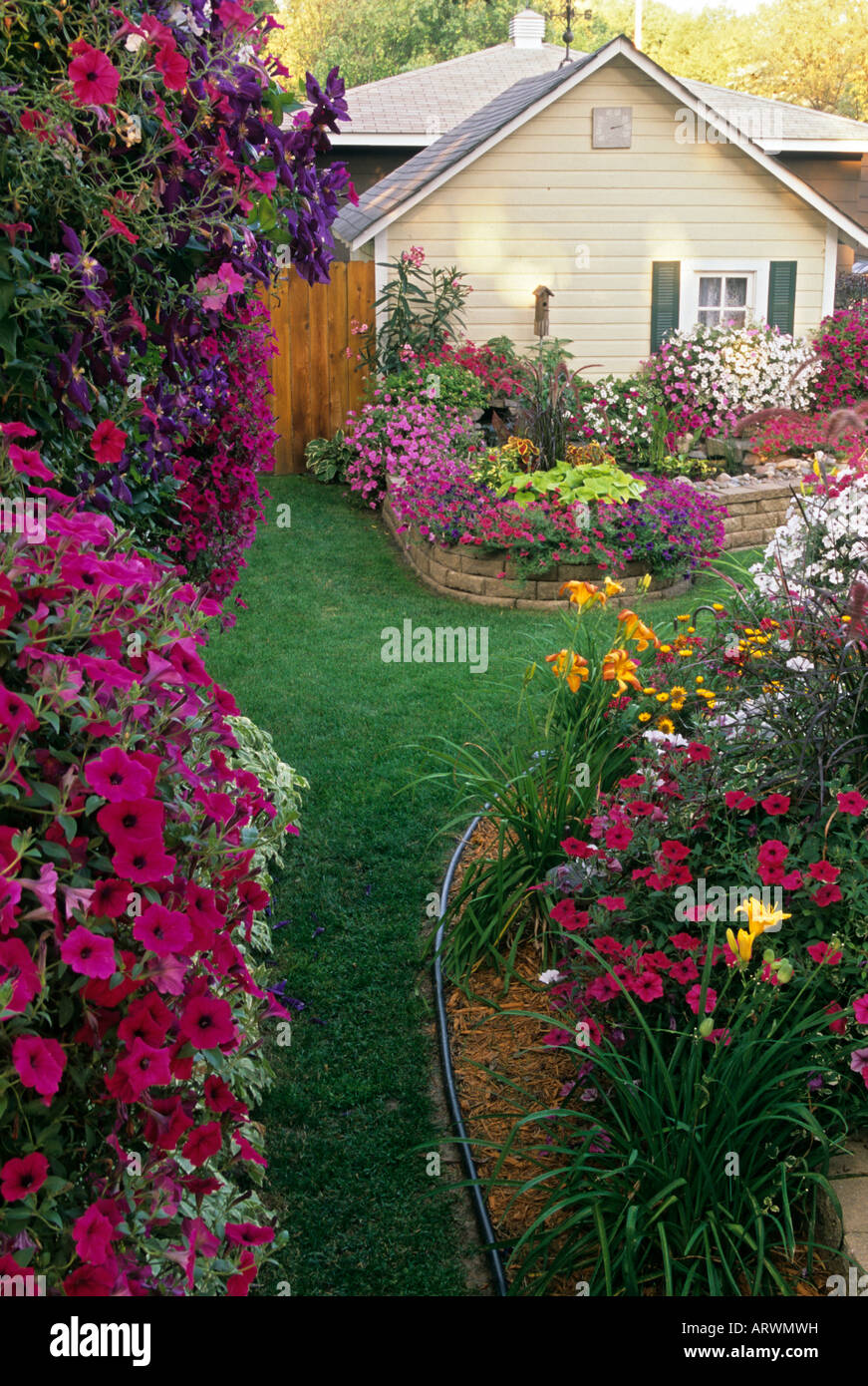

Raise the lights as seedlings grow, always maintaining that 4 to 6 inch space between plants and lights.Put the lights on a timer to keep them lit 16 to 18 hours daily.Ordinary fluorescent tubes usually do just fine. You needn't invest in expensive lights made specially for growing plants.Place the petunias 4 to 6 inches below a fluorescent light fixture until they're ready to plant outdoors.Relocate the container to a bright, but cooler place 65 degree F days, with night temperatures anywhere from 55 to 65 degrees F.

Remove the plastic film once seedlings emerge.This usually takes 7 to 10 days after planting. Cover the container with clear plastic and store it in a bright, warm (70 to 85 degrees F) place-out of direct sunlight-until seeds begin to sprout.Water with a fine mist to wash them into the potting material or press them in gently with your fingers before watering.Spread seeds sparingly on top of a container of clean, damp potting soil or milled sphagnum moss.Pelleted seeds are easier to handle, but not always available. Not only are they very tiny and fine, but they also need light in order to germinate. This means there's ample opportunity for problems to develop between seeding and the final product!īecause of their size, petunia seeds present a challenge, even to experienced gardeners. But it takes 10 to 12 weeks before petunias are big enough to plant out, so they need to be started early (about March first in northern climates). The advantages of starting petunias indoors are that you have a wider choice of varieties from which to choose, and you can raise large quantities of plants for less money. Just be sure to remove any leaves that will be submerged in the vase, where they would deteriorate rapidly.Īlthough petunias are easy to grow outdoors from transplants, they may prove more challenging for beginning gardeners to start from seed. Deadheading not only helps prolong blooming, it also keeps plants looking fresh, healthy and well-groomed.Ī final tip: If you have an abundance of petunias blooming in the garden, it won't hurt to cut a length of stem here and there to take indoors for use in bouquets and floral arrangements. Although it may not be practical to deadhead masses of petunias in the garden, it's a must for flowering annuals in containers. This practice, called "deadheading," encourages blooming by preventing seed formation. Whenever feasible, it's a good idea to remove faded flowers, including the portion below each flower where seeds will develop. Hanging baskets and other containers also need more frequent watering, perhaps as often as daily, depending on their size and the volume of soil they contain. Leave sprinklers on long enough to soak the soil to a depth of 6 to 8 inches every time you water. Except for "spreading" types, which require frequent watering, thorough watering once a week should be sufficient in all but the worst weather. Petunias tolerate lots of heat, and are relatively undemanding when it comes to water. Many varieties will thrive even if the soil is not rich and have undemanding requirements for watering.Ī planter such as this one may need to be watered every day. The most important requirement for growing petunias successfully is a location with plenty of light. Whether you like the old-fashioned types or the fancier, new varieties, there truly is something for everyone when it comes to petunias. Some petunias are more suited to container growing, while others are better for massing in the garden. “Spreading” types (such as “wave” petunias) are fast growers that can fill in large spaces.Milliflora are miniature with even smaller flowers and plant size.Multiflora have greater numbers of somewhat smaller flowers.They fall into distinct categories, based on flower size and growth habit. There are literally hundreds of named petunia varieties. Petunias are bright and lively, bloom from spring until frost, and scent the air with lovely fragrance.īest of all, petunias are amazingly easy to grow, both in the garden and in containers. Petunias are among the most popular flowering annuals for good reason.


 0 kommentar(er)
0 kommentar(er)
